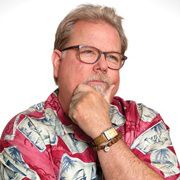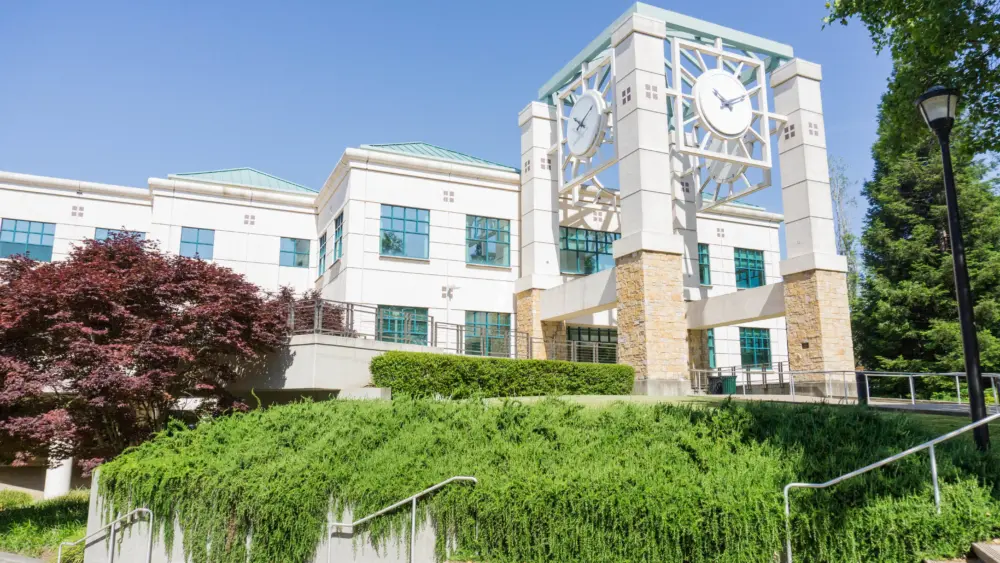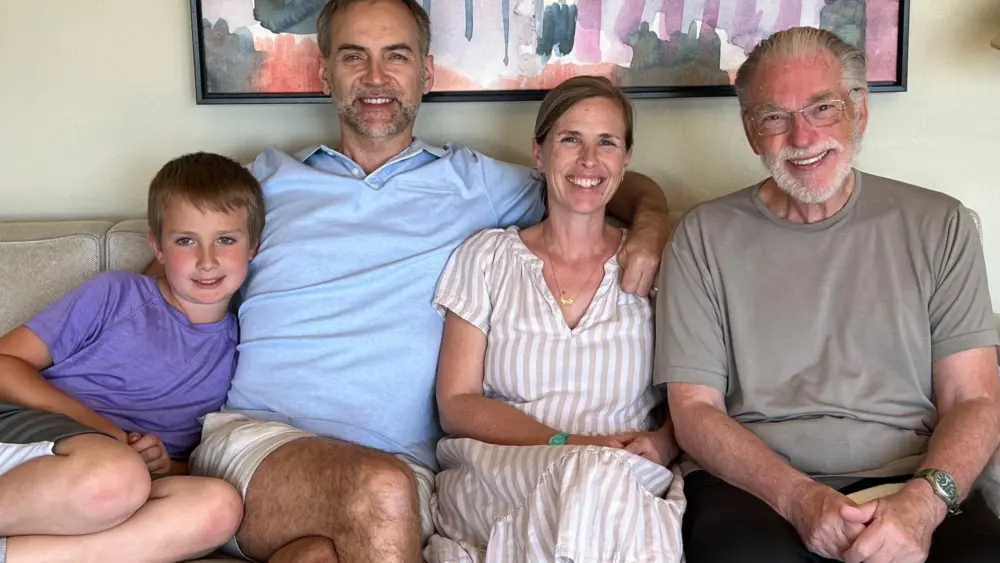Dominican University’s green MBA program shines a new light on business school.
The MBA. For years, the acronym has meant money in the bank. The holder of a master’s of business administration could count on consistent employment and a salary easily topping six figures (and, at times, going to seven). The MBA had numerous connections owing to the advanced network of academic contacts, not only those attending school with him or her, but also faculty and even visiting executives. It wasn’t so much about finding the right opportunity as it was wading through the offers.
This is to say nothing of the cache those three little letters hold, or the likely addition of other letters that often follow the MBA: CEO or ROI or IPO; also sometimes SEC and FBI.
Indeed, for those who could scrape together the cash and were willing to spend more time in school working hard, the alphabet soup awaiting them after graduation was a creamy little number made from a rich stock of dollars, stock options and appearances in “the Journal.”
Delicious.
The MBA was the alpha dog of the corporate set, equally adept at taking a company public or cutting expenses to the bone in the name of ringing out every cent of profit.
And the environment? Unless you were talking about the condition of a market or the managerial landscape of a company, the environment was something for those annoying members of the Sierra Club and Greenpeace to protest while the MBA’s company plundered natural resources in the name of shareholders.
Past tense
Fast forward to 2008, where green isn’t only the color of cash and the greenmail of hostile takeover bids, but the hue of choice for MBAs coming out of San Rafael’s Dominican University of California. As one of the first three U.S. graduate schools offering green MBAs, the small college tucked away in a quiet, wooded suburban neighborhood is on the corporate cutting edge. It’s shaping a new generation of entrepreneurs and dealmakers, indoctrinating them with a mantra that not only reflects a bottom line, but that balances natural resources and social justice as well.
Dominican, a small, private university of just 2,000 students, is making a name for itself by offering an MBA program that emphasizes the importance of environmental excellence from the boardroom on down. The two-year program is geared toward working professionals and career changers, with classes taking place two weekends a month. A total of 16 classes are required over four semesters. Class size is limited to 20 students or less.
The program was founded in 2000 by John Stayton and Jane Lorand at New College of California in Santa Rosa. Stayton is a graduate of Dominican and brought the program to the private university in September. Stayton and Lorand brought 10 professors with them as well as 40 students halfway through the program.
Like other MBA programs across the country, Dominican’s focuses on accounting, finance, management, organizational behavior and marketing. Where the green program separates itself is by emphasizing sustainability across all disciplines. It embraces the philosophy that companies must strive to produce a positive “triple bottom line” if they’re to succeed in the future. The triple bottom line translates to a company not only showing a financial profit, but also operating in a sustainable manner to benefit the environment and promoting social equity in the use of both natural and human resources.
The green MBA program’s tagline is: “Transform Yourself. Transform Business. Transform the World.”
Can these guys market or what?
Angelico Hall is the kind of structure found on almost any campus across the country. It was built in 1922 (Dominican was founded in 1890 as a Catholic liberal arts college) and carries the bouquet of an old church—a combination of ancient wood, dried flowers, grace and guilt. Take the stairs to the top floor, follow a warren of hallways, and you arrive at Director John Stayton’s modest office. The double windows open out, spilling light into the office. Stayton is seated at a small table covered with a hand-embroidered tablecloth, circa 1950s out of Hong Kong. On the opposite wall hangs a banner (made from hemp) hyping the MBA program.
Dressed casually in khakis and a long-sleeve dress shirt, the goateed Stayton isn’t one to be confused with either a bow-tied college professor or a pinstriped captain of industry. Turning away from the two computers on which he’s working, he explains how the world of commerce isn’t only talking a green game, but playing one as well. “You have to remember that business people are pretty smart,” he begins. “They’re beginning to understand there are limitations not only in terms of resources, but also in the Earth’s ability to absorb waste. To effectively continue, business needs to play a major role in creating solutions to these problems, so it’s in their best interest to become much more involved. We have to change the way we do and make everything. It’s either frightening or an amazing opportunity.”
Stayton likens the reality businesses face these days to the classic carrot and stick approach. “Companies unwilling to transform how they do what they do will get hurt and companies willing to embrace a change that will help transform them will be rewarded. Green business is becoming the new business as usual.”
And so it follows that businesses would want to hire MBAs with a thorough understanding of how companies must change business models to not only address the need for environmental responsibility but for related disciplines as well.
Best foot forward
So far, Stayton and company are managing to do what many companies only aspire to: They’re dominating the green master’s market. Dominican competes with the Presidio School of Management in San Francisco and the Bainbridge Graduate Institute in Washington state for MBA candidates who want to go green. Technically, Dominican and its predecessor New College have been in business the longest, founding a master’s program in 2000, with Bainbridge coming on line in 2002 and Dominican’s neighbor in the Presidio opening its doors in 2003.
Besides the MBA program at Dominican, the Environmental Finance Center, funded by the U.S. Environmental Protection Agency, moved from Cal State East Bay (formerly known as Hayward State) to Dominican. The center is funded via annual grants from the EPA with the money being used for projects such as a statewide biodiesel roundtable and efforts to get the television industry to promote environmentally friendly behavior.
Perhaps an example might be to persuade Fox News to drop the “Fair and Balanced” tagline in favor of using fertilizer less reliant on chemicals. Just a thought.
Mainstream MBA programs are shifting gears to include environmental studies as well. The Aspen Institute noted last year that Stanford and UC Berkeley had done a good job of bringing a green flavor to their traditional MBA programs. This is particularly critical, as Dominican has aspirations of competing for students with both of these well-established schools for students. The difference between Stanford and Dominican goes beyond reputation. Down on the farm, students will get a taste of the green way. At Dominican, they’ll get a five-course meal on biodegradable plates cooked without the use of greenhouse gases.
For now, Dominican is certainly competing on price. If you can get into Stanford, tuition runs $46,000 a year. Harvard requires a payment of $42,000 a year and the well-thought-of Wharton School at University of Pennsylvania checks in at $47,500 a year. On the other hand, Dominican is a bargain at just $17,000 annually. It’s also the low-price leader with respect to its green rivals, with Bainbridge checking in at $19,000 a year and Presidio dinging students $21,000 a year.
What does one get for his or her green in a green MBA program? Some of the courses touch the traditional MBA curriculum like human relations and organizational behavior as well as managerial finance and economics. But then there’s eco-commerce models and ecological economics.
“Our students come from all over the country and from overseas,” Stayton says. “They range in age from 22 to 65, and many are looking at starting a second career, so they’ve already been out in the business world and know how it works.”
While Stayton admits some of his students are enrolling in the green program to make changes to a world that needs them, he admits there are other drivers as well. “Smart business people are certainly seeing that the traditional business model, which relies on too many resources, can’t be sustainable. There are plenty of businesses that see green products’ appeal to consumers. Consumer surveys show that 30 to 50 percent of consumers consider the environment when they make choices on products and services. That’s a significant portion of the market.”
The bigger picture
That message isn’t lost on the mainstream players. Credit Suisse has introduced a new matrix for the greening of corporate America. The Swiss lender now has a “global warming index,” a measure of what stocks (and therefore companies) will benefit from the rush toward knocking down greenhouse emissions.
No less than the Gray Lady of business journalism, the Wall Street Journal, is cashing in as well. The newspaper, owned by corporate media mogul Rupert Murdoch, is offering a two-day economic conference for CEOs next month at the Bacara Resort in Santa Barbara. The invitation-only event will focus on “the rapidly developing relationship between the environment and the bottom line” at the opulent Central Coast getaway spot. While the conference will include sessions on carbon caps, alternate fuels and gauging shareholders’ comfort with going green, you have to wonder just how many environmentally conscious corporate warriors will use their corporate jets to get there.
Savvy companies are using the environment to help recruit talent. Web-based MonsterTRAK.com recently did a poll that showed 80 percent of young hires want to work for a company that’s impacting the environment in a positive manner, while 92 percent want to draw a check from a company that’s downright friendly to the environment. Wall Street investment house Merrill Lynch has taken up the back cover on its recruiting brochure to demonstrate just how tight the company is with Ma Nature.
No place is the commitment to green more obvious than in commercial real estate. Two-thirds of the country’s real estate investors, property managers and owners have invested funds in green efforts and many are planning on sinking more cash in this year. Efforts to cut back on energy and water consumption, as well as reduce the release of greenhouse gases, have been widely embraced in commercial real estate circles.
People first
Dominican’s program isn’t focused strictly on the environment. One of the key components of the green movement is social justice and, as Stayton explains, it’s more pragmatic than singing “Kumbaya” and buying fair trade coffee at Whole Foods: “What companies need to understand is, if they’re not mindful of the resources they’re using overseas and the need for social equity, people will destroy the environment simply to survive. A global approach lets a company develop a long-term viability that not only affects its prospects but ours as well.”
Dominican is taking its own global approach, partnering with many different local and regional organizations including the Marin Mammal Center, Marin Recycling Center, the National Park Service and the Ocean Conservancy. “We have students working with World Centric, California Closets and Gallo Sonoma,” Stayton adds. He sees the chance to have MBA students working with businesses throughout the North Bay.
“Eco-tourism is a natural spot for us to help, with restaurants, hotels and bed and breakfasts all becoming more cognizant of the need to be sustainable. Another obvious opportunity is the wine industry and the efforts of many places to go organic and to utilize biodynamics,” he says.
The MBA director isn’t simply spouting ideas off the top of his head. He lives in Windsor on a small farm that produces 100 varieties of organic fruit that he and his wife sell to local restaurants, stores and at farmers’ markets.
Stayton knows his MBA program is sustainable. “We’re creating agents of change. There’s plenty of demand from businesses that need somebody who can come in, look at the business and build a strategy to become sustainable. The bigger the business, the more challenging it is to go green. But the effort is worth it, believe me.”
Dominican is already looking to make its green program more accessible. The university is launching a new certificate program for businesses looking to go green. The game plan is to have at least 10 in-house managers who will participate in a six-month certificate program, developing projects that will make their company more sustainable.
A second program is aimed at businesspeople who already hold an MBA. The program will “green the MBA” through twice-a-month weekend classes (for six months) that will focus not on business basics but on environmental and social performance.
The bottom line for Dominican is that it’s found a niche in teaching students about why the triple bottom line is important.
Author
-

Bill Meagher is a contributing editor at NorthBay biz magazine. He is also a senior editor for The Deal, a Manhattan-based digital financial news outlet where he covers alternative investment, micro and smallcap equity finance, and the intersection of cannabis and institutional investment. He also does investigative reporting. He can be reached with news tips and legal threats at bmeagher@northbaybiz.com.
View all posts



